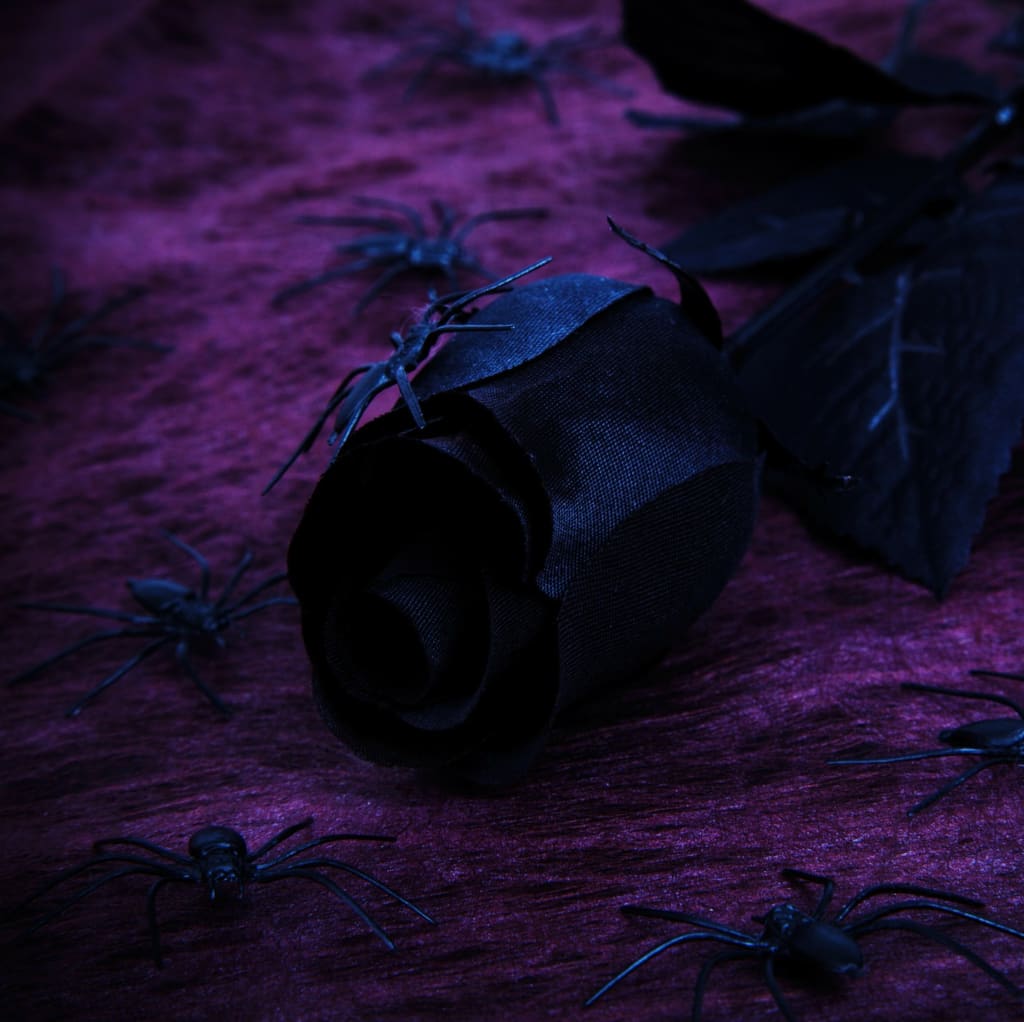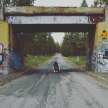
My fascination with horror, twists, and thrillers began with the story “A Rose for Emily”, by William Faulkner. For those of you who haven’t read it, the story is about a woman still mourning the death of her husband after ten years. The story maintains a consistently spooky theme, until the twist is revealed: the woman kept her husbands decomposing corpse in her bed until the day she died and was found lying next to his skeleton. I remember slamming the book of short stories shut with a loud gasp and rushing from my room, goose bumps forming on my skin with a delightful shiver. Faulkner wove a fascinating tale, using several simple elements to formulate a gripping thriller.
• Set the scene. The best thrillers begin with an appropriately haunting setting, but not an overly cliché one. Using Halloween, dark and stormy nights, or other overly popularized tropes may seem affective but it tends to read as lazy or overdone. Instead take a cue from Faulkner and open with an important occasion of some kind. A funeral, a party that goes awry, or a conversation wherein characters (primary, secondary, or background can all be used for this) discuss an event important to the plot. This allows you to draw the reader in with a relatable setting, and introduces them to the world that is familiar only to you and your characters.
• Use appropriate wording. Remember that when writing horror the wording you use is immensely important. Rather than describing a building as old or crumbling consider a construction technique like this: “The once sunny yellow building had been splendid and sophisticated in its time; but now it stood as a husky, greying monument to times gone by. The wind and weathering of time had been unkind to the grand façade, leaving it an unsightly carcass bringing decay and ruin into the otherwise beautiful suburban villa.” Beginning with the scene of what something once was allows the reader to feel the destructive effects of time for his or her self. This works as well with people: “In her youth she had possessed the kind of beauty that made men stop on the street and peruse her voluptuous body with a kind of worshipful appreciation. But alas the marks of time had been driven deep into her with each year of negligence. Once glowing with youth and health, her skin now bore the blemishes and marring of a life poorly spent. Her eyes sunk deep into the flesh of her face as one who has drank too heavily, taken little care of themselves, and spent too many years carousing into the wee hours of dawn.” Rather than describe the character as old and ugly, you can build the characters personality and physical description at the same time, painting a full image for your readers all at once.
• Use colors to build the situation. Picture a joyous occasion like a child’s birthday party or a wedding. You probably imagined light airy colors like sky blue, pink, yellow, and accents of white. Now imagine the funeral for a wealthy but unloved man, dying alone in his rambling home. You likely imagined dark dingy colors like fading wallpaper in browns and greys, dark wood, and black clothing. Keep in mind that the colors you assign to a place, person, or event will directly affect how your readers feel about it. Even a dark color like black can be assigned to a happy event as long as it’s described correctly, and with the right colors alongside it. “Ethan had insisted on having his ninth birthday party at “Laz-r World” the towns only laser tag game room. The walls, floor, and ceiling were all a fading black worn to a cheerful raven color from years of parties and gatherings. The walls and carpet were splattered with dashes of bright color, like confetti that had been purposely added in to create an overall feeling of excitement. Ethan and his friends burst through the door as loud pop music began blasting over the speakers, obscuring the room as much as the brightly colored lasers flashing from mounts on the wall.” Even though dark colors were being used, the story did not have an overall dark feeling to it, because of the other adjectives at play.
• You can use an initially happy setting to build up to the twist. Take the story above for example; imagine that’s only the first paragraph of the first chapter. That story could easily be continued to create a dark setting, perhaps if the children discover something dark and gruesome lurking in the shadows of the laser tag hall. If the story is supernatural horror then one of the children could become possessed, get devoured by a monster, or be whisked away by some unseen force into another dimension. Perhaps what you want to write is more realistic horror. In that case the scene above could end with dark shadows lurking ominously behind the children as they play, unaware of the evil amongst them. Said evil could be revealed at the end to be something unexpected, like Ethan himself being a budding killer intent on harming the other children in the shadows and obscurity of the laser tag hall.
• Let the story flow naturally. When writing it’s easy to have specific goals in mind for what certain characters will do or for what might happen to them. Perhaps you have a background character you had planned on killing off, but when the time comes it doesn’t make as much sense as you thought it would. Feel free to brainstorm why that might be, write a few alternate scenes and decide which one makes the most sense to your story. Don’t be afraid of changing your plans if it enhances the overall storyline.
• Set the stage with clues, but be careful not to make the twist too obvious. Once my obsession with thrillers and mysteries began to blossom, I started reading Agatha Christie books with a near ravenous excitement. One of my favorite things about Agatha Christie was the way she could drop small clues all through out the story without ever giving it away. I remember reading the book “Murder is Easy”, absolutely convinced that I knew who the culprit was early on. By the end of the book I was less sure of myself, but still convinced that I had called it from the beginning. When the murdered was revealed I found myself flabbergasted that I had missed it. All the clues were right in front of me the entire time, and I missed them! In many ways that is the true key to writing a twist ending. Give the reader enough clues that they feel as though they should have seen it coming all along. But throw in enough red herrings to lead them astray.
• Use red herrings not red billboards. The idea of the red herring is that it’s a coincidence that looks like a clue. Consider a murder mystery. A character is introduced who is eager to help the detectives for reasons of their own. It might be a family member of the detective or one of their coworkers, attempting to rebuild a long dead relationship with them. It could be a mysterious stranger who enters at the exact right moment and offers their services. This character will garner immediate suspicion, which will always be met with even more suspicions. A character that seems too suspicious is an ineffective red herring because many readers are familiar with the concept of the red herring, and will therefore be on the lookout for one. Make your red herrings as innocuous as possible, something that the readers can easily bypass as inconsequential to the plot but that can also pop up to obscure the truth throughout the story. For example, the family member attempting to assist the investigation could be the killer attempting to cover their tracks. However they could also be privy to the fact that one of the detectives is the real murderer, and attempting to bring the truth to light. This plot device works well with a character that can be easily explained: coworkers, family members, or close friends. But the ‘mysterious stranger’ is harder to explain and far more suspicious in nature. Red herrings should always be easily explained, while still leaving a small portion of doubt in the readers mind.
• Remember to read. I’ve heard it said before that books are like toolboxes for writers. Whatever genre it is you’re interested in writing, find several authors you like in that genre and read a book by each of them. You can pick up the tools they use, learn from their mistakes, and formulate ideas for your own works. Read a Stephen King novel and remember the things that give you chills or make you afraid to sleep in the dark. Read an Agatha Christie novel and take note of how she delivered the twist and what you might have done differently. Remember that reading is almost as good for you as actually writing when it comes to honing your craft. In the end remember that it is your story, and more than anything you ought to take pride in the finished product. Write what you want to read, create characters you can love, despise, and relate with. Writing is a process, but it is also an art. Don’t obsess over the formula and let the beauty of your work fall to the wayside.
About the Creator
Abi Roads
A writer from the pacific northwest, doing my best to draw inspiration from the world around me.






Comments
There are no comments for this story
Be the first to respond and start the conversation.